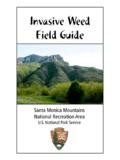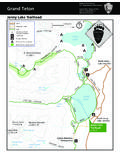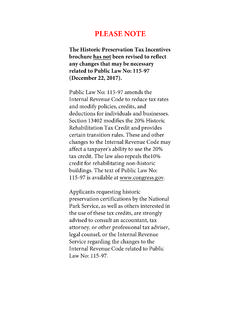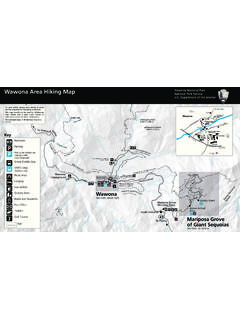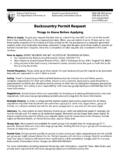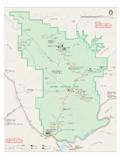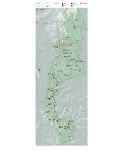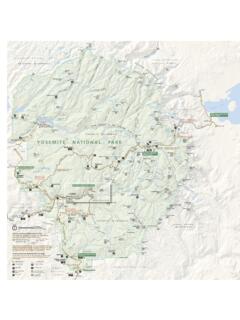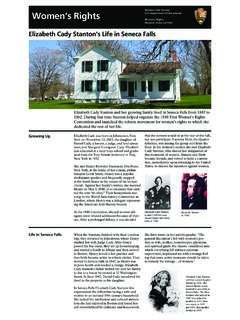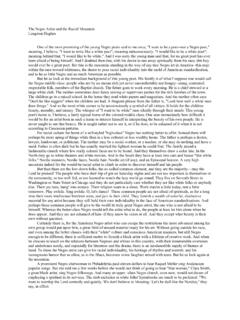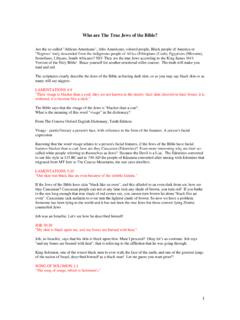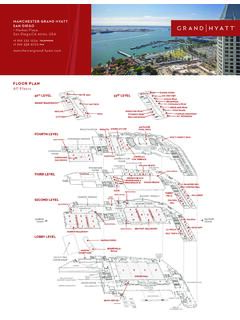Transcription of The Battle of Antietam - National Park Service
1 The Battle of Antietam National park Service Department of the Interior Antietam National Battlefield P. O. Box 158. Sharpsburg, MD 21782. Dawn approached slowly through the fog on September 17, 1862. As soldiers tried to wipe away the dampness, cannons began to roar and sheets of flame burst forth from hundreds of rifles, opening a twelve hour tempest that swept across the rolling farm fields in western Maryland. A clash between North and South that changed the course of the Civil War, helped free over four million Americans, devastated Sharpsburg, and still ranks as the bloodiest one-day Battle in American history. we are driven to protect our The present seems to be the own country by transferring the most propitious time since the seat of war to that of an enemy commencement of the war for who pursues us with a relentless the Confederate army to enter and apparently aimless hostility.
2 Maryland.. Jefferson Davis General Lee September 7, 1862 3 September1862. The Battle of Antietam was the culmination of the Maryland Campaign of 1862, the first invasion of the North by Confederate General Robert E. Lee and the Army of Northern Virginia. In Kentucky and Missouri, Southern armies were also advancing as the tide of war flowed north. After Lee's dramatic victory at the Second Battle of Manassas during the last two days of August, he wrote to Confederate President Jefferson Davis that we cannot afford to be idle. Lee wanted to keep the offensive and secure Southern independence through victory in the North; influence the fall mid-term elections;. obtain much needed supplies; move the war out of Virginia, possibly into Pennsylvania; and to liberate Maryland, a Union state, but a slave-holding border state divided in its sympathies.
3 After splashing across the Potomac River and arriving in Frederick, Lee boldly divided his army to capture the Union garrison stationed at Harpers Ferry. Gateway to the Shenandoah Valley, Harpers Ferry was a vital location on the Confederate lines of supply and communication back to Virginia. The 12,000 Union soldiers at Harpers Ferry threatened Lee's link south. Gen. Thomas Stonewall Jackson and about half of the army were sent to capture Harpers Ferry. The rest of the Confederates moved north and west toward South mountain and Hagerstown, Maryland. Back in Washington , President Abraham Lincoln turned to Major General George B. McClellan to protect the capital and respond to the invasion. McClellan quickly reorganized the demoralized Army of the Potomac and advanced towards Lee.
4 The armies first clashed on South mountain where on September 14 the Confederates tried unsuccessfully to block the Federals at three mountain passes Turner's, Fox's and Crampton's Gaps. Following the Confederate retreat from South mountain , Lee considered returning to Virginia. However, with word of Jackson's capture of Harpers Ferry on September 15, Lee decided to make a stand at Sharpsburg. The Confederate commander gathered his forces on the high ground west of Antietam Creek with Gen. James Longstreet's command holding the center and the right while Stonewall Jackson's men filled in on the left. The Confederate position was strengthened with the mobility provided by the Hagerstown Turnpike that ran north and south along Lee's line; however there was risk with the Potomac River behind them and only one crossing back to Virginia.
5 Lee and his men watched the Union army gather on the east side of the Antietam . God bless you and all with you. if we defeat the army arrayed before Destroy the rebel army if possible. us, the rebellion is crushed, for I do not Abraham Lincoln believe they can organize another army. 15 September 1862 But if we should be so unfortunate as to meet with defeat, our country is at their mercy.. Maj. Gen. George B. McClellan 11 September 1862. Thousands of soldiers in blue marched into position throughout the 15th and 16th as McClellan prepared for his attempt to drive Lee from Maryland. McClellan's plan was, in his words, to attack the enemy's left, and when matters looked favorably, attack the Confederate right, and whenever either of those flank movements should be successful to advance our center.
6 As the opposing forces moved into position during the rainy night of September 16, one Pennsylvanian remembered, all realized that there was ugly business and plenty of it just ahead.. The twelve hour Battle began at dawn on the 17th. For the next seven hours there were three major Union attacks on the Confederate left, moving from north to south. Gen. Joseph Hooker's command led the first Union assault. Then Gen. Joseph Mansfield's soldiers attacked, followed by Gen. Edwin Sumner's men as McClellan's plan broke down into a series of uncoordinated Union advances. Savage, incomparable combat raged across the Cornfield, East Woods, West Woods and the Sunken Road as Lee shifted his men to withstand each of the Union thrusts. After clashing for over eight hours, the Confederates were pushed back but not broken, however over 15,000 soldiers were killed or wounded.
7 While the Union assaults were being made on the Sunken Road, a mile-and-a-half farther south Union Gen. Ambrose Burnside opened the attack on the Confederate right. His first task would be to capture the bridge that would later bear his name. A small Confederate force, positioned on higher ground, was able to delay Burnside for three hours. After taking the bridge at about 1:00 , Burnside reorganized for two hours before moving forward across the arduous terrain a critical delay. Finally the advance started only to be turned back by Confederate General Hill's reinforcements that arrived in the late afternoon from Harpers Ferry. Neither flank of the Confederate army collapsed far enough for McClellan to advance his center attack, leaving a sizable Union force that never entered the Battle .
8 Despite over 23,000 casualties of the nearly 100,000 engaged, both armies stubbornly held their ground as the sun set on the devastated landscape. The next day, September 18, the opposing armies gathered their wounded and buried their dead. That night Lee's army withdrew back across the Potomac to Virginia, ending Lee's first invasion into the North. Lee's retreat to Virginia provided President Lincoln the opportunity he had been waiting for to issue the preliminary Emancipation Proclamation. Now the war had a dual purpose of preserving the Union and ending slavery. EXPERIENCE YOUR AMERICA.
